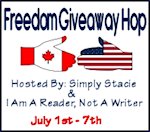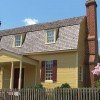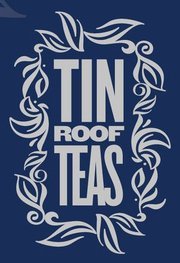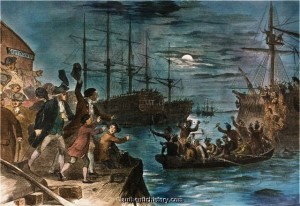 Welcome to my blog. The week of 1–7 July 2011, I’m participating with more than two hundred other bloggers in the “Freedom Giveaway Hop,” accessed by clicking on the logo at the left. All blogs in this hop offer book-related giveaways, and we’re all linked, so you can easily hop from one giveaway to another. But here on my blog, I’m posting a week of Relevant History essays, each one with a Revolutionary War theme. To find out how to qualify for the giveaways on my blog, read through each day’s Relevant History post below and follow the directions. Then click on the Freedom Hop logo so you can move along to another blog. Enjoy!
Welcome to my blog. The week of 1–7 July 2011, I’m participating with more than two hundred other bloggers in the “Freedom Giveaway Hop,” accessed by clicking on the logo at the left. All blogs in this hop offer book-related giveaways, and we’re all linked, so you can easily hop from one giveaway to another. But here on my blog, I’m posting a week of Relevant History essays, each one with a Revolutionary War theme. To find out how to qualify for the giveaways on my blog, read through each day’s Relevant History post below and follow the directions. Then click on the Freedom Hop logo so you can move along to another blog. Enjoy!
 Happy Fourth of July! This afternoon for a few hours, my sons and I will be at the Joel Lane Museum House in historical clothing, talking with visitors about patriot Joel Lane and the Revolutionary War in North Carolina. If you’re in the Raleigh area, stop by and say hello. Musket drills and firings, games for the children, tours of the house, and plenty of cool lemonade.
Happy Fourth of July! This afternoon for a few hours, my sons and I will be at the Joel Lane Museum House in historical clothing, talking with visitors about patriot Joel Lane and the Revolutionary War in North Carolina. If you’re in the Raleigh area, stop by and say hello. Musket drills and firings, games for the children, tours of the house, and plenty of cool lemonade.
 You can hardly talk about the Revolutionary War without bringing up the topic of tea, so Relevant History welcomes Tin Roof Teas’ general manager Ryan Hinson. Tin Roof Teas grew out of the Hinson family’s passion for tea and is a haven for tea lovers. Explore the world through the selection at Tin Roof Teas. For more information, check the company web site.
You can hardly talk about the Revolutionary War without bringing up the topic of tea, so Relevant History welcomes Tin Roof Teas’ general manager Ryan Hinson. Tin Roof Teas grew out of the Hinson family’s passion for tea and is a haven for tea lovers. Explore the world through the selection at Tin Roof Teas. For more information, check the company web site.
*****
Lapsang souchong is a black tea from the Fujian province in China. Historically considered a “man’s tea,” as well as a true Scotch lover’s best friend, Lapsang souchong (or lapsang for short) is considered to be one of the strongest varieties of tea. Lapsang souchong tealeaves are dark with a golden tip. The tea has an amber-red color when brewed, and a bold, assertive and smoky flavor. Only the Crocodile souchong and the Tarry souchong outweigh the original souchong in depth and smokiness.
Lapsang Souchong tea was probably one of the teas thrown in the harbor during the Boston Tea Party. It was known also as Bohea during that time period. According to old colonial ship manifests that can still be found to this day, about one-third of the tea exported from China in the eighteenth century was green tea, with green Hyson “the choicest of all.” But the bulk of the tea that Europeans, and thus European-Americans, consumed was black tea from the Bohea Mountains.
 On the night of 16 December 1773, the three tea ships in Boston Harbor contained 240 chests of Bohea, 15 of Congou, 10 of Souchong (all black teas), 60 of Singlo, and 15 of Hyson (both green teas). Green tea accounted for about 22% of the shipment’s total volume, and 30% of the value.
On the night of 16 December 1773, the three tea ships in Boston Harbor contained 240 chests of Bohea, 15 of Congou, 10 of Souchong (all black teas), 60 of Singlo, and 15 of Hyson (both green teas). Green tea accounted for about 22% of the shipment’s total volume, and 30% of the value.
So, for this Fourth of July if you want to really show your patriotism, brew yourself a nice pot of Lapsang and enjoy the brew that helped to truly launch the fight for independence.
*****
A big thanks to Tin Roof Teas and Ryan Hinson. Ryan will give away a chest supply of Lapsang souchong tea to someone who contributes a legitimate comment on this post today or tomorrow. No Indian costume required. I’ll choose one winner from among those who comment by Tuesday 5 July at 6 p.m. ET, then publish the name of the winner on my blog the week of 11 July. Delivery is available within the U.S. only.
**********
Did you like what you read? Learn about downloads, discounts, and special offers from Relevant History authors and Suzanne Adair. Subscribe to Suzanne’s free newsletter.
